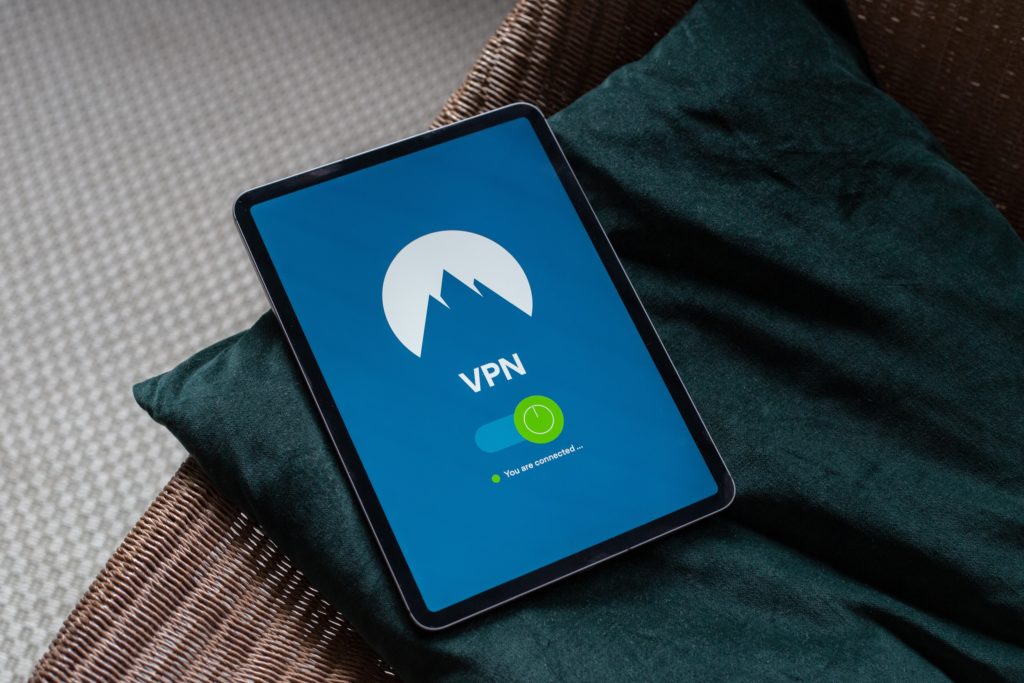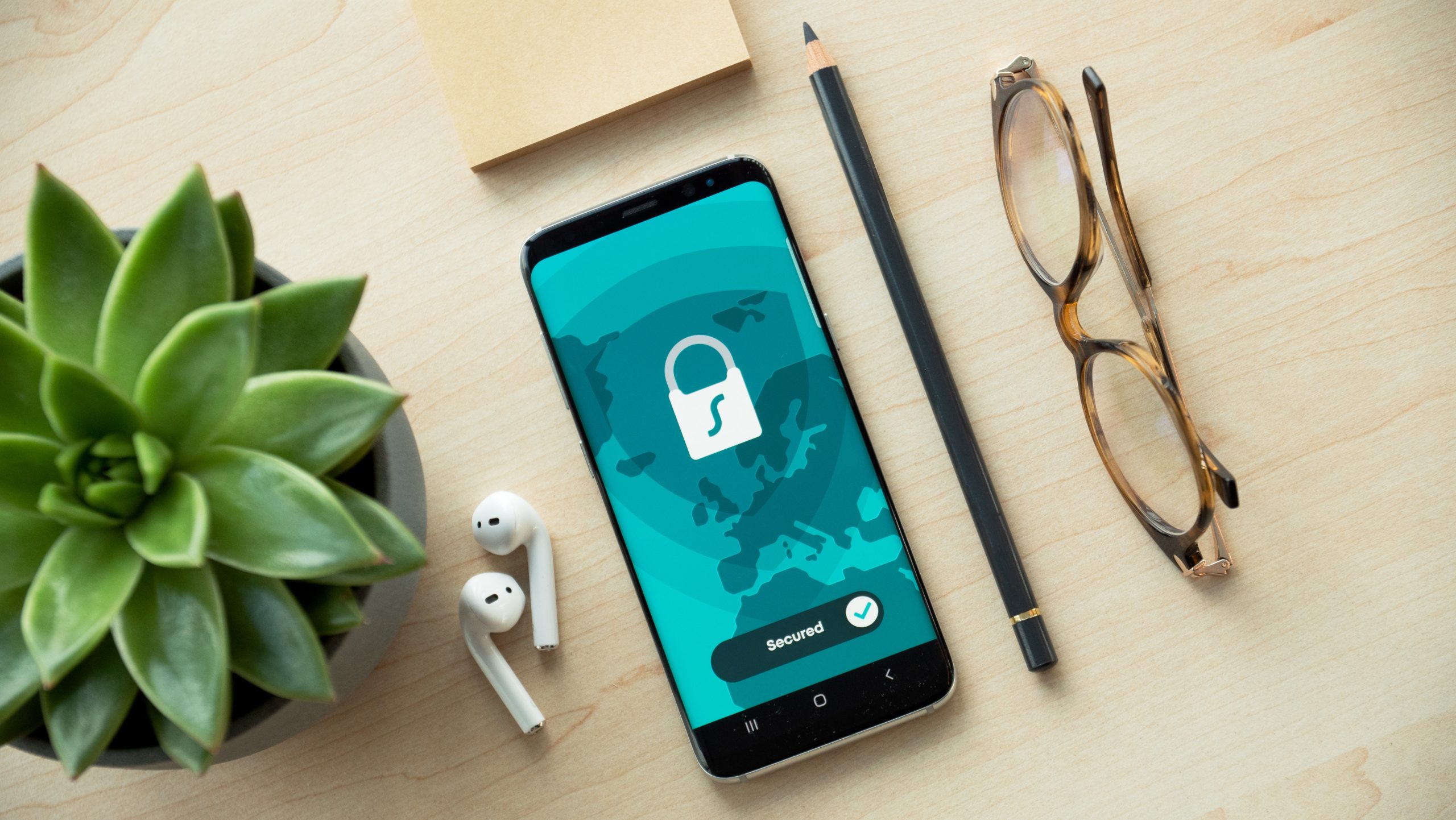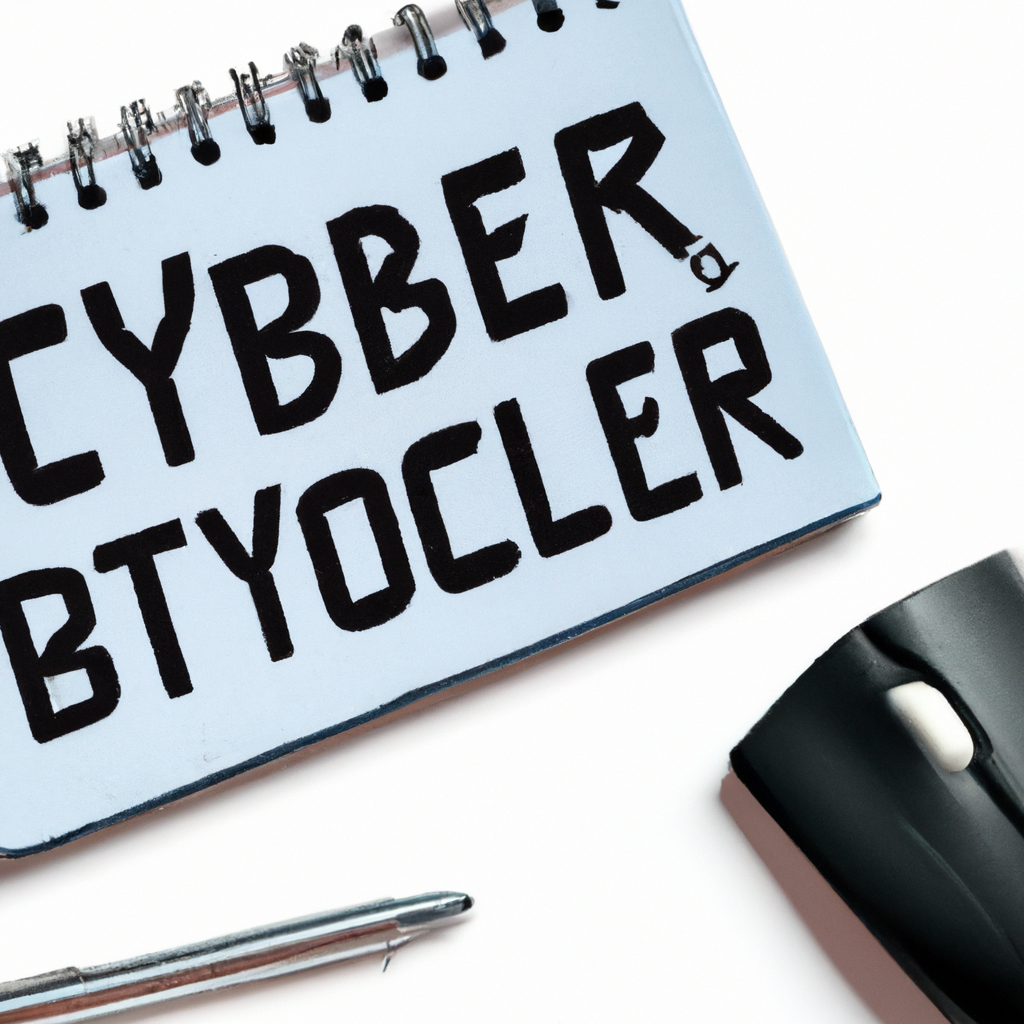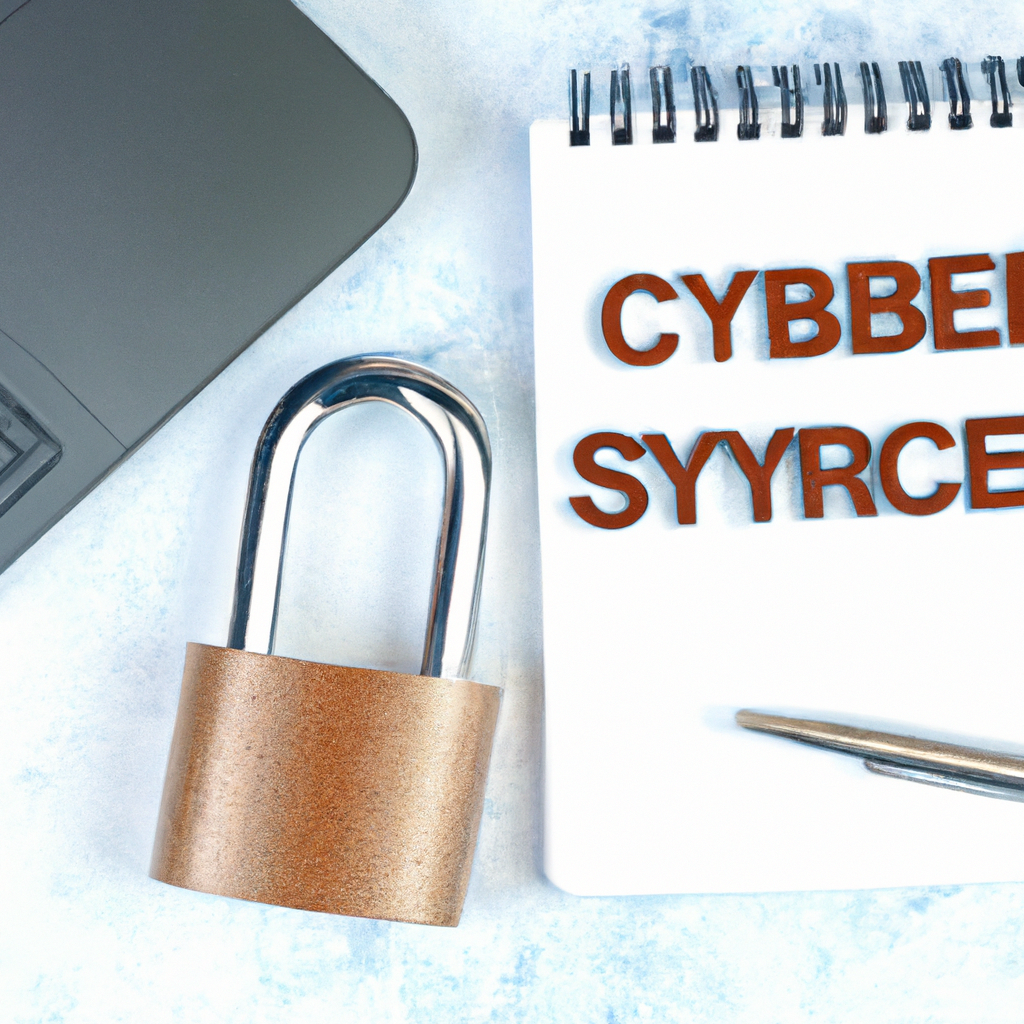
10 Key Steps To Enhance Cybersecurity In Remote Work
In today’s digital age, with more and more people working remotely, ensuring strong cybersecurity has become vital. Protecting sensitive information and safeguarding against potential cyber threats is crucial for both individuals and organizations alike. This article presents 10 key steps that can be taken to enhance cybersecurity in remote work, offering valuable insights and practical tips to help you navigate the virtual world securely. From strengthening passwords to implementing two-factor authentication, these steps will empower you to confidently tackle the challenges of remote work while keeping your digital assets safe and secure.
1. Secure Network Connections
In the era of remote work, secure network connections are crucial to protect sensitive information and prevent unauthorized access. There are several measures you can take to ensure the security of your network connections.
Use Virtual Private Networks (VPNs)
One of the most effective ways to secure your network connections is by using a Virtual Private Network (VPN). A VPN creates a secure encrypted tunnel between your device and the internet, making it difficult for hackers to intercept your data. By using a VPN, you can ensure that your online activities are private and your data remains secure, even when you are connected to public Wi-Fi networks.
Implement Multi-Factor Authentication
Another important step in securing your network connections is implementing multi-factor authentication (MFA). MFA adds an extra layer of security by requiring users to provide additional verification, such as a fingerprint, a one-time password, or a security key, in addition to their username and password. By implementing MFA, you can greatly reduce the risk of unauthorized access to your network resources.
Ensure Secure Wi-Fi Connections
Securing your Wi-Fi connections is essential to protect your network from potential threats. Make sure to use strong, unique passwords for your Wi-Fi networks and change them regularly. Additionally, consider disabling the broadcasting of your Wi-Fi network’s SSID (Service Set Identifier) to make it more difficult for attackers to discover and connect to your network. It is also recommended to use the latest encryption protocols, such as WPA2 or WPA3, to further enhance the security of your Wi-Fi connections.
2. Strong Password Policies
A strong password policy is crucial in safeguarding your accounts and sensitive information from unauthorized access. Implementing strong password policies is a simple yet effective way to enhance your cybersecurity.
Encourage Complex Passwords
Encourage the use of complex passwords that are difficult to guess. A strong password typically includes a combination of uppercase and lowercase letters, numbers, and special characters. Discourage the use of common passwords, such as “123456” or “password,” as they are easily compromised. Encouraging employees to use password generators or secure password management tools can help them create and remember complex passwords.
Enforce Regular Password Updates
Regularly updating passwords is essential to prevent unauthorized access. Set a policy that requires employees to update their passwords at regular intervals, such as every 90 days. This helps ensure that even if a password is compromised, it is only valid for a limited period of time. Remind employees to avoid reusing passwords across multiple accounts, as this can increase the risk of a security breach.
Use Password Managers
Password managers are tools that securely store and manage passwords. They eliminate the need for individuals to remember multiple complex passwords by automatically filling them in when needed. Encourage the use of password managers to reduce the risk of weak or forgotten passwords. Password managers also offer the convenience of syncing passwords across devices, making them a valuable asset for remote workers.

3. Phishing Awareness Training
Phishing attacks continue to be a significant threat to organizations and individuals. Educating employees about phishing attacks and providing them with the knowledge and skills to identify and handle suspicious emails and communications is crucial in preventing successful phishing attempts.
Educate Employees about Phishing Attacks
Start by providing comprehensive training to employees about phishing attacks. Help them understand the various techniques used by attackers, such as email spoofing, deceptive links, and malicious attachments. Teach them how to recognize common red flags, such as generic greetings, urgent requests for personal information, or misspellings and grammatical errors in emails. By educating your employees about the tactics used by phishers, you empower them to be vigilant and cautious in their online activities.
Teach Spotting Suspicious Emails
Train employees to spot suspicious emails by highlighting common indicators of phishing attempts. Emphasize the importance of verifying the source of an email before clicking on any links or opening attachments. Encourage them to check for any inconsistencies in the email address, domain, or sender’s name. Teach them to be wary of unexpected email attachments or requests for sensitive information. By teaching employees how to identify and handle suspicious emails, you can significantly reduce the risk of falling victim to phishing attacks.
Conduct Simulated Phishing Exercises
Regularly conducting simulated phishing exercises is an effective way to test and reinforce employees’ vigilance against phishing attacks. These exercises involve sending simulated phishing emails to employees and tracking their responses. This allows you to identify any knowledge gaps or areas for improvement in your employees’ phishing awareness. Provide feedback and additional training based on the results of these exercises to continually strengthen your organization’s defenses against phishing attacks.
4. Endpoint Security Measures
Endpoint security refers to securing the devices (endpoints) that connect to your network, such as laptops, smartphones, and tablets. Implementing robust endpoint security measures is essential to protect your organization’s sensitive data and prevent unauthorized access.
Install Antivirus and Antimalware Software
Install reputable antivirus and antimalware software on all endpoints to detect and remove malicious software. Regularly update the software to ensure it is equipped to detect the latest threats. Configure the software to perform regular scans and real-time monitoring to prevent any infections from compromising your devices or network. Endpoint security solutions should also include features like email filtering, web protection, and behavior-based detection to provide comprehensive protection against various types of threats.
Enable Firewall Protection
Firewalls act as the first line of defense against unauthorized access to your network. Ensure that firewalls are enabled on all endpoints to monitor and control incoming and outgoing network traffic. Configure firewalls to only allow essential services and applications to communicate with the network, minimizing the risk of unauthorized access. Regularly update firewall settings and monitor firewall logs to identify any suspicious or unauthorized activities.
Implement Automatic Updates
Enabling automatic updates for operating systems, applications, and security patches is crucial in maintaining the security of your endpoints. Regular updates often include critical security fixes that address known vulnerabilities. By enabling automatic updates, you ensure that your endpoints are equipped with the latest security patches and defenses against emerging threats. Regularly review and test the compatibility of updates before deploying them to minimize any potential disruptions to your remote work environment.

5. Secure Cloud Solutions
The use of cloud solutions has become increasingly common in remote work scenarios. It is essential to implement robust security measures to protect your data and ensure the privacy of your cloud-based resources.
Choose Trusted Cloud Service Providers
When selecting a cloud service provider, choose reputable and trusted providers who prioritize security. Research their security practices, certifications, and data protection measures to ensure that your data will be stored and managed securely. Pay attention to their encryption practices, access controls, and compliance with relevant data protection regulations.
Encrypt Data Stored in the Cloud
Encrypting your data before storing it in the cloud adds an additional layer of security. Use encryption techniques such as AES (Advanced Encryption Standard) to encrypt sensitive data. This way, even if unauthorized access occurs, the data will remain unreadable and unusable without the encryption key. In addition to encryption at rest, consider implementing encryption in transit to protect data as it travels between your devices and the cloud.
Implement Access Controls for Cloud Resources
Implement strict access controls for your cloud resources to prevent unauthorized access. Use strong, unique passwords for cloud accounts and enable multi-factor authentication whenever possible. Assign roles and permissions to users based on their job responsibilities, granting access only to the resources they need. Regularly review and revoke access rights to ensure that former employees or unauthorized users cannot access your cloud resources.
6. Data Backup and Recovery
Data backup and recovery is crucial in the event of data loss, hardware failure, or cyberattacks. Implementing reliable data backup and recovery practices ensures that your critical data remains safe and accessible.
Regularly Backup Data
Regularly backup your data to minimize the impact of potential data loss incidents. Establish a backup schedule that suits your organization’s needs, taking into account the frequency of data changes and the criticality of different data sets. Backup both on-premises and cloud-based data, ensuring that multiple copies of your data are stored securely and in different locations. Consider implementing automated backup solutions to streamline the process and ensure consistency.
Use Offsite or Cloud Backup Solutions
Storing backups offsite or in the cloud provides an additional layer of protection against data loss. If a physical disaster, such as a fire or flood, occurs at your primary location, having offsite backups ensures that you can recover your data from a separate location. Cloud backup solutions offer the convenience of automated backups, scalability, and redundancy, making them an ideal choice for remote work environments. Choose a reputable cloud backup provider that offers strong encryption and secure data storage practices.
Test Data Recovery Processes
Regularly test your data recovery processes to ensure that your backups are reliable and complete. Perform occasional test restores to verify the integrity of your backups and validate the effectiveness of your recovery procedures. Document any issues or improvements identified during the testing phase and update your recovery plans accordingly. Testing your data recovery processes regularly helps ensure that you can quickly and effectively restore your data in the event of a data loss incident.

7. Security Patches and Updates
Keeping your systems and software up to date with the latest security patches and updates is crucial in mitigating the risk of security breaches. Timely application of patches and updates helps address known vulnerabilities and strengthens your overall security posture.
Apply System and Software Updates
Regularly check for system and software updates provided by vendors and apply them promptly. These updates often include critical security patches that address known vulnerabilities hackers can exploit. Configure systems and devices to automatically check for updates or establish a regular update schedule to ensure that your software is up to date. Patch management solutions can assist in streamlining the update process, ensuring that all patches are applied consistently across your network.
Keep Hardware Firmware Updated
In addition to applying software updates, it is essential to keep hardware firmware updated. Firmware is the software embedded in hardware devices, such as routers, switches, and IoT devices. Vendors regularly release firmware updates that address security vulnerabilities and improve device performance. Regularly check for firmware updates from hardware manufacturers and apply them following the provided instructions. Keeping firmware updated helps protect against potential exploits and enhances the overall security of your network infrastructure.
Enable Automatic Patching
Enabling automatic patching and updates whenever possible simplifies the process of keeping your systems and software up to date. Automatic patching ensures that your devices receive critical security updates promptly, reducing the window of vulnerability for potential cyberattacks. However, it is important to periodically review the update settings to ensure that automatic patches do not cause compatibility or performance issues. Regularly review the release notes and recommendations provided by software vendors to stay informed about any potential impacts of updates.
8. Secure Email Communications
Email communication plays a vital role in remote work, and securing your email communications helps protect your sensitive information and prevent unauthorized access.
Encrypt Email Communication
Encrypting your email communication ensures that the contents of your emails remain confidential and secure. Implement secure email protocols, such as Transport Layer Security (TLS), to encrypt emails in transit. Additionally, consider using end-to-end encryption solutions that encrypt emails from the sender to the recipient, ensuring that only the intended recipient can decrypt and view the contents of the email. Encourage the use of secure email providers or email encryption tools to enhance the security of your email communications.
Use Email Filtering and Spam Protection
Email filtering and spam protection are essential in reducing the risk of phishing attacks and malware infections through email. Enable email filtering to automatically identify and quarantine spam emails, malicious attachments, and suspicious links. Invest in reliable email security solutions that use advanced threat detection techniques, such as machine learning and behavior analysis, to proactively identify and block potential threats. Regularly update the email filtering and spam protection settings to adapt to evolving email-borne threats.
Beware of Email Attachments and Links
Train employees to exercise caution when dealing with email attachments and links, as they are common vectors for malware and phishing attacks. Encourage employees to verify the source and legitimacy of any email attachments or links before interacting with them. Make sure employees understand the risks associated with opening attachments or clicking on links from unknown or suspicious senders. Routinely remind employees to refrain from providing sensitive information or credentials via email, as legitimate organizations typically do not request such information through email.

9. Secure File Sharing Practices
In the remote work environment, secure file sharing practices are essential to protect your data from unauthorized access and ensure confidentiality.
Use Secure File Sharing Platforms
Utilize secure file sharing platforms that employ strong encryption and robust access controls. Choose reputable file sharing providers that offer end-to-end encryption, ensuring that your files remain encrypted both in transit and at rest. Enable permissions and access controls that allow you to specify who can access and modify shared files. Regularly review and update the access control settings to align with changing requirements and personnel.
Authenticate File Recipients
Implement authentication mechanisms to verify the identities of file recipients before granting access to shared files. This can include requiring recipients to enter a unique code, use a secure link, or authenticate with their credentials. Authenticate recipients’ identities to prevent unauthorized individuals from accessing shared files. Additionally, consider implementing expiration dates for shared files to limit access to the files to a specific timeframe.
Implement File Permission Controls
Implement granular file permission controls to ensure that only authorized individuals have access to specific files or folders. Assign unique permissions to individuals or groups based on their role and need-to-know basis. Regularly review and adjust file permissions to align with organizational changes and to revoke access for individuals who no longer require it. Implementing file permission controls ensures that sensitive files are only accessible to those who need them, reducing the risk of accidental or intentional data leaks.
10. Employee Awareness and Vigilance
Maintaining a high level of employee awareness and vigilance is crucial in the ongoing effort to enhance cybersecurity in remote work environments. By educating employees about best practices and encouraging a proactive security mindset, organizations can create a robust cyber defense culture.
Educate Employees about Cybersecurity Best Practices
Regularly provide training and educational resources to employees to keep them informed about cybersecurity best practices. Topics can include password security, phishing prevention, safe browsing habits, and data protection. Encourage employees to stay updated on the latest security threats and share relevant information with their colleagues. By instilling a sense of ownership and responsibility in employees, you create a proactive security culture that acts as an additional layer of defense against cyber threats.
Encourage Reporting of Security Incidents
Promote a culture of openness and encourage employees to report any security incidents or suspicious activities promptly. Establish clear reporting channels and provide guidance on how to report incidents, making it easy and convenient for employees to raise concerns. Emphasize that reporting incidents, even if they turn out to be false alarms, is encouraged and appreciated. Prompt reporting allows the organization to take immediate action to mitigate risks and prevent further damage.
Promote Regular Security Trainings
Regularly conduct security training sessions to refresh and reinforce employees’ knowledge of cybersecurity best practices. These sessions can cover various topics, including emerging threats, social engineering tactics, and safe online behaviors. Tailor the training to address the specific challenges and risks associated with remote work. By consistently promoting security trainings, you create a strong security culture that empowers employees to actively contribute to the protection of the organization’s digital assets.
In conclusion, enhancing cybersecurity in remote work environments requires implementing a holistic approach that encompasses network security, password policies, phishing awareness, endpoint security, secure cloud solutions, data backup and recovery, security patching, secure email communications, secure file sharing practices, and employee awareness. By following these key steps, you can significantly strengthen your organization’s cybersecurity posture and better protect your sensitive data. Remember, cybersecurity is a continuous effort, and it is crucial to stay vigilant and adapt to new and evolving threats.







